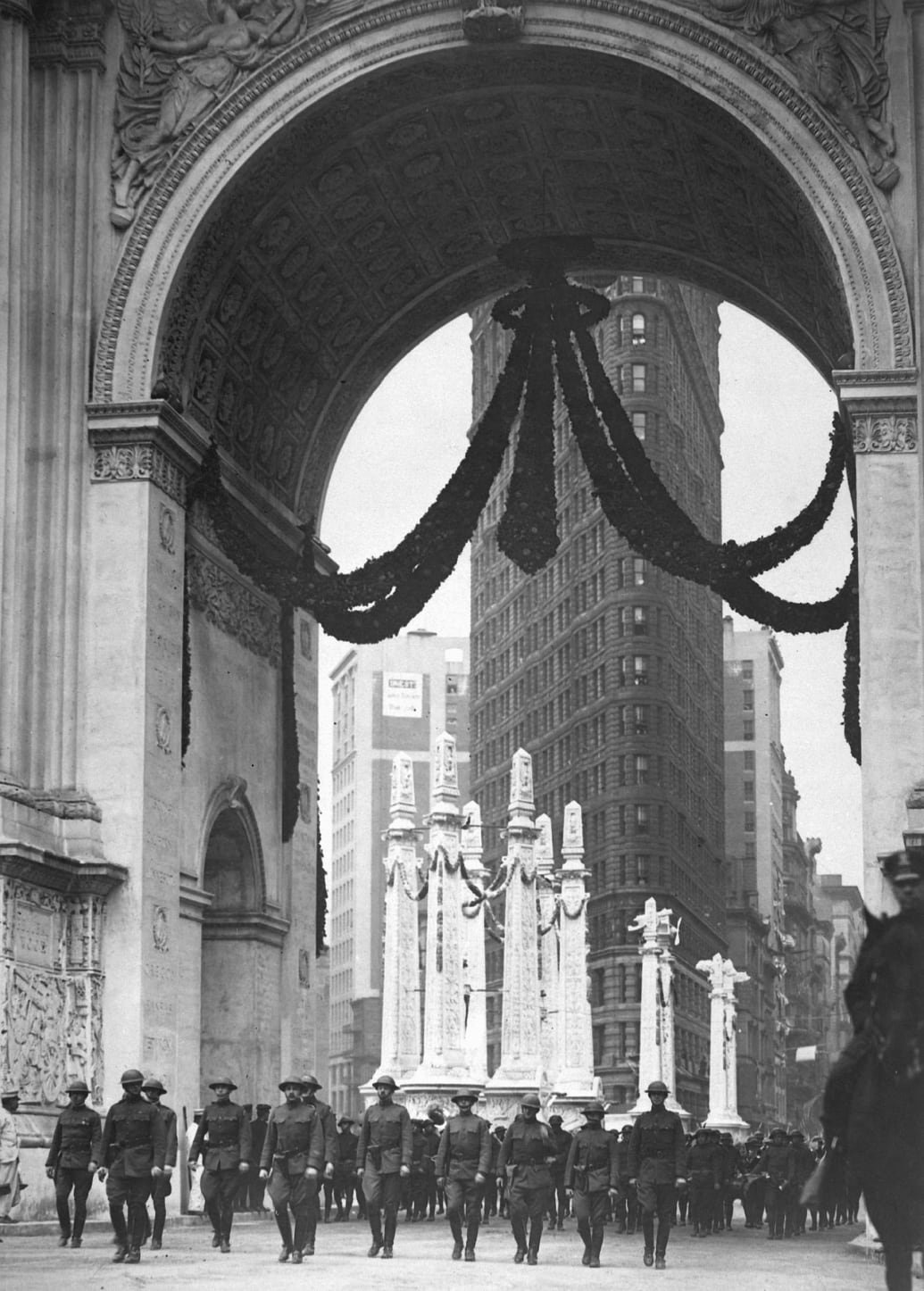The Victory Arch
World War I, also known as The Great War, tends to get overshadowed by World War II, but was pretty brutal. Approximately 9 million soldiers perished in battle, 23 million sustained injuries, and 5 million civilians lost their lives due to military engagements, famine, and illnesses. The movement of troops during the war further intensified the devastating impact of the 1918 Spanish flu, which all of us today are very familiar with after the Covid-19 pandemic. Tough times.
The Madison Square Garden Victory Arch with the Met Life Tower in the background
- Photo: Museum of the City of New York
After the war’s end, New York City wanted to welcome the soldiers coming back home in large numbers with something grand. Mayor Hylan came up with the idea of a massive parade complete with a Victory Arch to be built at the northern end of Madison Square Park. He hired Thomas Hastings (co-architect of the New York Public Library) to design the arch.
The WWI homecoming parade up Fifth Avenue, March 25, 1919 - Photo: Library of Congress
Describing this parade as a mere success would be an understatement. It was an unprecedented celebration, epic and unlike anything Manhattan had witnessed before, and perhaps unmatched since. A staggering estimate indicated that over three million individuals thronged the streets, wildly cheering on the 27th Division (men from NY State) as they proudly marched from Washington Square Park, up Fifth Avenue, up to 110th Street. In comparison, today's St. Patricks Day Parade marches from 42nd Street to 86th Street – this was almost triple that distance.
Photo: Interim Archives
The Madison Square Victory Arch was demolished by the summer of 1920 after the parades and festivities had ended.
Victory Arch with The Flatiron Building in the background. - Photo: Library of Congress
I absolutely love this image of the Victory Arch with the Flatiron Building in the background. It’s one of my favorite New York City buildings.
Photo: WikiCommons
The Flatiron has been in the news recently as it went up for auction and was sold for $190 million to Abraham Trust founding partner Jacob Garlick. He couldn’t get the cash together for the downpayment so it went to auction again! This time it sold for $161 million to Jeffrey Gural. He saved $29 million dollars, so hopefully he’s thrilled. He also told several news sources that he may convert the space into apartment buildings, which based on what’s been happening with commercial leases post-pandemic, is a smart idea.
Painting by Chris Baker
I for one would love to live in one of the most iconic buildings in NYC! You?






